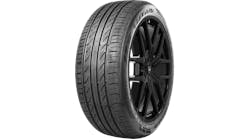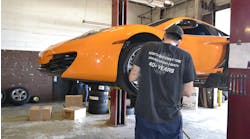Repsol Honda’s Casey Stoner took his sixth consecutive victory at Phillip Island ahead of newly-crowned World Champion Yamaha Factory Racing’s Jorge Lorenzo in second place, while Monster Yamaha Tech 3’s Cal Crutchlow completed the podium in third place.
Weather conditions over the weekend were cool, with wind and intermittent rain also contributing to making the state of the track quite challenging for riders on Friday and Saturday. Track temperatures for the race were around the 30°C range making the softer option slicks the popular choice. All twenty riders taking selected the soft compound front slick, while all but one rider selected the medium compound rear slick which was the softer of the two options.
Q&A with Shinji Aoki – Manager, Bridgestone Motorsport Tyre Development Department
Conditions for most of the weekend were cooler than usual, what effect did this have on tyre performance and tyre choice for the race?
“Tyre performance over the weekend was good, with good warm-up performance and tyre grip reported by riders, but the cooler temperatures limited the riders to the softer front and rear slick options. Many riders evaluated the harder option slicks in practice, qualifying and warm-up, but as track temperatures were still cool for the race, no riders selected the harder front slick and only one rider selected the harder rear slick.
“Analyzing feedback after the race, it seems that if conditions were warmer than more riders would have selected harder slicks, particularly for the front end as the medium compound front slick offered greater cornering stability, particularly in the bumpier sections.”
With the softer compound slicks being used at such a fast circuit, were there any problems with tyre wear?
“No excessive tyre wear was recorded after the race as both the asymmetric rear slick options we provided had much harder rubber on the left shoulder, which is put under the greater loads. Also, the Phillip Island circuit has a flowing layout and though turns eleven and twelve produce very high track temperatures, overall there aren’t many hard acceleration zones which create elevated levels of abrasion.
“Some riders did experience graining to their tyres over the weekend yet this wasn’t at a level where it had a major effect on tyre performance. Generally in this situation we would advise teams to switch to harder compounds to avoid graining, but with the cool temperatures making this difficult, our tyre engineers had to advise teams on other ways to manage the situation”
The Phillip Island circuit has a very high average speed and creates extreme rear tyre temperatures. Did the new generation of 1000cc MotoGP machines cause even greater stress on the tyres last weekend?
“Despite the extra power of the 2012 MotoGP machines, lap times were at a similar level to last year and tyre temperatures were not too different from what we have seen in recent years. Bridgestone supplied special construction heat-resistant rear slicks at Phillip Island again this year and in conjunction with the less rigid construction of the 2012 specification tyres, these provided good warm-up performance and edge grip while still ensuring overheating of the rear tyres - particular in the last sector of the track - from occurring.”



